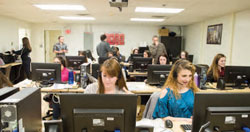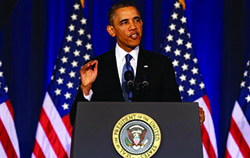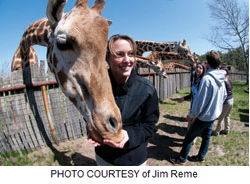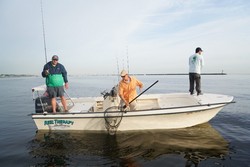The alumni donation rate at the University slightly exceeded the national average for colleges and universities in the United States during the 2012 fiscal year.
Lucille Flynn, Associate Vice President for University Advancement, said the University’s participation rate of solicited donors was 9.4 percent for the 2012 fiscal year, which ended on June 30. A press release issued by the Council for Aid to Education on February 20 cited the results of its annual Voluntary Support of Education survey, which showed the national percentage of alumni who donate to their alma maters was 9.2 percent for the 2012 fiscal year.
The University’s alumni participation rate has steadily increased over the last decade, according to Mary Anne Nagy, Vice President for Student and Community Services. Nagy, who has worked at the University for more than 25 years, said the rise in donation rates has correlated with the University’s ascension in national attention, expanded extra-curricular offerings and an increase of resident students.
“The student experience at Monmouth University now is very different than it was in the last 15 to 20 years,” Nagy said, and added that the University has been ranked in the Princeton Review’s annual “The Best 377 Colleges” guide eight years in a row.
“We’re now much more of a residential campus,” she said. “When you have 2,000 students living with you, getting involved in activities, clubs, organizations and working more on campus, they develop a bonding experience with the campus that, in the long run, has a direct effect on giving and how they feel about the University.”
Nagy admitted the growth in the University’s donation rate has recently stagnated. However, she suspects it to start trending upward again because of an increased number of segmented donation options for alumni.
In addition to offering the Hawk Walk Brick Campaign, which allows anyone to purchase a personalized brick engraved with their name on campus, University Advancement has also recently placed an emphasis on encouraging alumni to donate to clubs and organizations they were involved with while they attended the University.
“We really do seem to find that when people are asked to contribute to something that they were a part of as opposed to a broader fund, they’re more willing to [donate],” Nagy said. “I see us moving in that direction, maybe even more than what we have in the past.”
Flynn said, “A lot of donors like to know exactly where their money is going, so they’ll support a particular school, program, or team, instead of just donating to unrestricted funds.”
The University routinely reaches out to potential donors via its Phonathon, where a faction of current students and Annual Fund members solicit donations over the phone from more than 25,000 alumni throughout the year. But after Superstorm Sandy devastated NJ in October, the University faced a unique challenge in soliciting fundraising for the 2013 fiscal year.
The University hesitated to contact any alumni who live in the immediate surrounding areas, and instead focused their efforts on graduates in other parts of the country.
“We reached out to alumni who were in other states, such as Pennsylvania or Massachusetts, and just told them that the University was okay,” Nagy said. “From there, after a few weeks, we started to contact alumni who were closer.”
The University established the “Monmouth University Hurricane Sandy Relief Project,” where funds raised were split evenly between the Hurricane Sandy New Jersey Relief Fund, headed by Govenor Chris Christie’s wife Mary Pat Christie, and the MU Sandy Relief Fund, which will directly benefit some alumni, faculty and students who were adversely affected by Sandy.
Flynn indicated many alumni from surrounding states contributed to the relief project, which Nagy currently estimates has raised between $15,000 and $16,000.
While University Advancement, University board members and the Student Alumni Association already personally responded to donors via handwritten notes, personalized e-mails and phone calls during numerous Thankathons, Flynn and Nagy believe the relief project will build upon the University’s reputation of graciously replying to its donors. “I was always taught charity begins at home,” Nagy said. “I want alumni and students to think about that too. Take care of Monmouth and let’s also take care of other people.”
Flynn said over 65 percent of the University’s employees donate to the University on an annual basis, which she says is a “huge number” for any university. Nagy added, “It shows how much the faculty believes in this institution, when they are willing to give not only of their time and talent, but also of their treasure.”
Nagy cited the University’s donations during 2012 as a sign of a growing belief in the institution from many outsiders as well. “To achieve what we’ve achieved is pretty remarkable given all the things that have happened here in the last year.” Nagy said. “And my suspicion is [donations] will be on an uptick soon.”
PHOTO COURTESY of Kevin Scally




